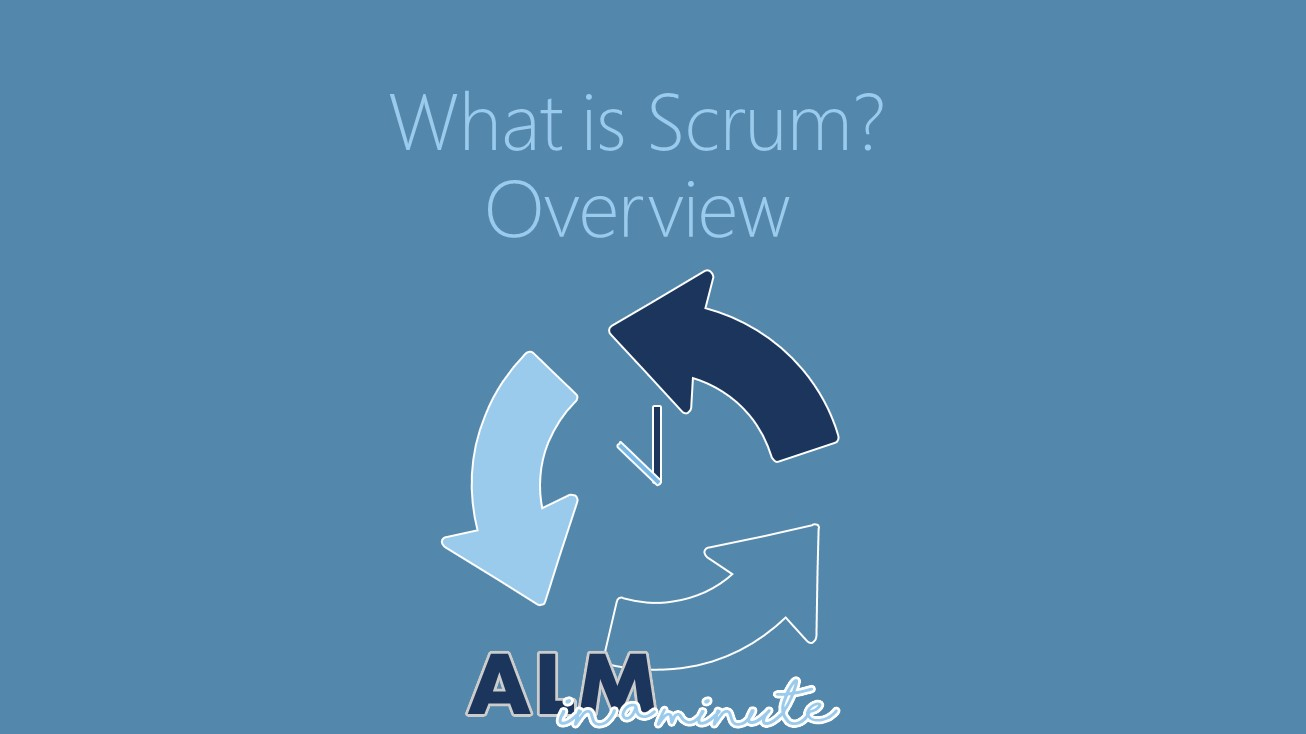What is Scrum?
Overview of the scrum methodology, its roles, events, and artifacts.
It has basic explanations for each role - scrum master, product owner, development team, artifact - product backlog, user stories, the definition of done, etc, and events - sprint, sprint review, daily scrum, sprint retrospective.
It is a good video for information technology individuals trying to understand Scrum in 5 minutes.
You can download the Scrum guide here.
Introduction:
- Jeff Sutherland and Ken Schwaber in the 1990s
- First presented in Austin Texas, in 1995
- Scrum Software Development Process
- Scrum deriving from Rugby (The New New Product Development Game) – Takeuchi e Nonaka
- Team Work, with objectives
-
Product Owner: The Product Owner represents the interests of the stakeholders and is responsible for maximizing the value of the product. Their key responsibilities include:
- Maintaining and prioritizing the Product Backlog.
- Ensuring that the Scrum Team understands the items in the Product Backlog.
- Collaborating with stakeholders to gather requirements and feedback.
- Making decisions about the release and features of the product.
-
Scrum Master: The Scrum Master serves as a servant-leader for the Scrum Team, facilitating the Scrum events and helping the team and organization adopt Scrum principles and practices. Their key responsibilities include:
- Coaching the Scrum Team on Scrum theory, practices, rules, and values.
- Removing impediments that hinder the team's progress.
- Facilitating Scrum events, including Sprint Planning, Daily Scrums, Sprint Review, and Sprint Retrospective.
- Fostering collaboration and self-organization within the team.
-
Development Team: The Development Team consists of professionals who are responsible for delivering a potentially shippable Increment of the product at the end of each Sprint. Their key responsibilities include:
- Selecting items from the Product Backlog to include in the Sprint Backlog during Sprint Planning.
- Collaborating closely to deliver high-quality work.
- Self-organizing to determine how to accomplish the work.
- Ensuring that the Increment meets the Definition of Done.
Scrum Artifacts:
-
Product Backlog: This is a prioritized list of all the features, enhancements, bug fixes, and other work that needs to be done on the project. It's maintained and managed by the Product Owner and serves as the single source of requirements for any changes to be made to the product.
-
Sprint Backlog: At the beginning of each Sprint, the Scrum Team selects items from the top of the Product Backlog to include in the Sprint Backlog. It contains the tasks that the team commits to complete during the Sprint to achieve the Sprint Goal. The Sprint Backlog is owned by the Development Team.
-
Increment: This is the sum of all the completed items from the Product Backlog at the end of each Sprint. It's the potentially shippable product increment that must be in a usable state, meeting the Definition of Done. Increments are reviewed during the Sprint Review to gather feedback and plan the next steps.
These artifacts provide clarity and transparency to the team, stakeholders, and anyone else involved in the project, ensuring everyone has a clear understanding of what needs to be done and the progress being made.
Scrum Events:
-
Sprint Planning: This event marks the beginning of a Sprint. The Scrum Team, including the Product Owner, Scrum Master, and Development Team, collaborates to select items from the Product Backlog to include in the Sprint Backlog. The team also defines a Sprint Goal during this meeting.
-
Daily Scrum: Also known as the daily stand-up, this is a short, time-boxed meeting that occurs every day during the Sprint. Team members briefly discuss progress made since the last meeting, plan work for the next 24 hours, and identify any impediments. Conducted to ensure close collaboration and transparency among team members.
-
Sprint Review: At the end of each Sprint, the Scrum Team and stakeholders gather to review the Increment and provide feedback. The Product Owner discusses what has been done and what remains in the Product Backlog. The team and stakeholders collaborate on what to do next.
-
Sprint Retrospective: This event occurs after the Sprint Review and before the next Sprint Planning. The Scrum Team reflects on the past Sprint to identify what went well, what could be improved, and actionable items for the next Sprint. It's an opportunity for continuous improvement.
-
Backlog Refinement: While not an official Scrum event, backlog refinement is an ongoing activity where the Scrum Team collaborates to ensure that the Product Backlog items are well-defined, understood, and appropriately prioritized. It helps to prepare for upcoming Sprint Planning sessions.


